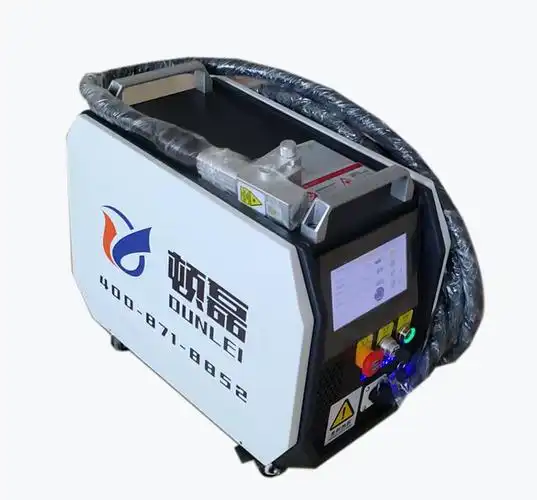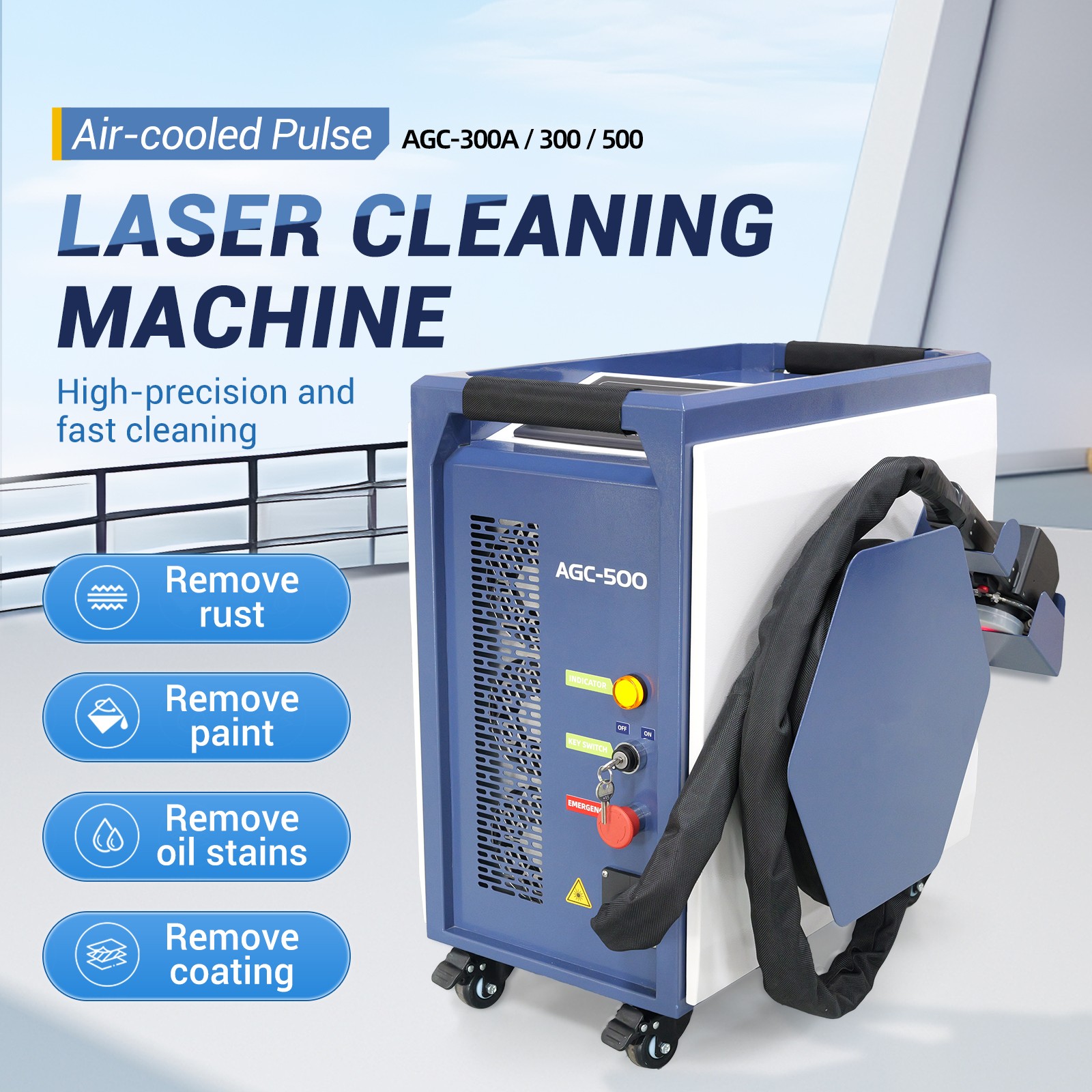Having spent years working with laser cleaning technologies in industries ranging from aerospace to marine repair, I’ve seen how these machines can transform rusty, corroded surfaces into pristine condition. But when it comes to cleaning rust spots on aluminum, a material known for its unique properties, I often get asked: Is laser rust removal up to the task? Aluminum’s lightweight strength makes it a favorite in everything from aircraft parts to boat hulls, but its tendency to form oxide layers or rust-like corrosion can be a headache. In this article, I’ll share my hands-on experience and technical insights to answer whether laser rust removal can effectively clean aluminum, along with practical tips, safety considerations, and real-world examples to guide you through the process.

Understanding Aluminum “Rust” and Laser Cleaning
Before we dive into the specifics, let’s clear up a common misconception. Aluminum doesn’t rust like iron or steel—rust is iron oxide, specific to ferrous metals. What we often call “rust” on aluminum is actually aluminum oxide or corrosion spots, which form when aluminum reacts with oxygen, water, or chemicals. These appear as white, powdery spots, pitting, or discoloration, especially in harsh environments like marine or industrial settings.
Laser rust removal, or laser ablation, uses a high-energy laser beam to vaporize contaminants like rust, oxide, paint, or grease from a surface. The process is non-contact, meaning the laser doesn’t physically touch the material, which is a big advantage for delicate metals like aluminum. But aluminum’s properties—high reflectivity, low melting point, and thin oxide layers—raise questions about whether lasers can clean it effectively without damage. Let’s explore.
Can Laser Rust Removal Clean Rust Spots on Aluminum?
Yes, laser rust removal can effectively clean rust spots (aluminum oxide or corrosion) on aluminum, but it requires careful setup and expertise.
In my work, I’ve used lasers to clean aluminum components like marine fittings, aircraft panels, and automotive parts, often with excellent results. The key is understanding aluminum’s unique characteristics and matching the laser settings to the task. Unlike steel, aluminum is softer, more reflective, and more prone to heat damage, so precision is critical. Here’s why lasers can work and what to watch out for:
Selective Cleaning: Lasers can target the oxide layer without removing the underlying aluminum, preserving the material’s integrity.
Non-Contact Process: No abrasive contact means no scratches or mechanical stress, ideal for aluminum’s soft surface.
Eco-Friendly: Laser cleaning avoids chemicals or abrasive media, making it suitable for industries with strict environmental standards.
However, challenges like aluminum’s reflectivity and heat sensitivity mean you can’t just point and shoot. I’ve seen cases where improper settings caused surface pitting or discoloration, so let’s break down the factors that determine success.

Key Factors for Cleaning Aluminum with Lasers
To successfully clean rust spots on aluminum, you need to consider several factors. Here’s what I’ve learned from years of hands-on laser cleaning:
1. Aluminum’s Material Properties
Aluminum has a lower melting point (around 660°C) and higher reflectivity than steel, which affects laser cleaning:
Reflectivity: Polished or bare aluminum reflects laser light, reducing efficiency and potentially causing beam scatter.
Heat Sensitivity: Excessive heat can cause warping, pitting, or discoloration, especially on thin aluminum parts.
Oxide Layer: Aluminum oxide is thin and tightly bonded, requiring precise energy to remove without damaging the substrate.
My Experience: I once cleaned corrosion from an aluminum boat propeller. The thin oxide layer came off cleanly with a low-power pulsed laser, but a test on a polished section showed reflections that needed angle adjustments to avoid beam scatter.
2. Type of Laser
Two main laser types are used for rust removal:
Pulsed Lasers: Deliver energy in short bursts, minimizing heat buildup. These are ideal for aluminum due to their precision and low thermal impact.
Continuous Wave Lasers: Emit a steady beam, generating more heat and risking damage to aluminum’s soft surface.
My Recommendation: Always use a pulsed fiber laser (20-100W) for aluminum to ensure controlled cleaning and minimal heat transfer.
3. Laser Settings
Proper calibration is make-or-break for aluminum:
Power: Use low power (20-50W) to avoid overheating. Higher power (100W+) is risky for thin or polished aluminum.
Pulse Frequency: High frequencies (50-100 kHz) provide smoother cleaning with less heat buildup.
Beam Focus: A slightly defocused beam reduces intensity on the surface, protecting aluminum from damage.
Scanning Speed: Faster speeds (1000-2000 mm/s) prevent prolonged exposure to one spot.
Case Study: Cleaning corrosion from an aluminum aircraft panel, I used a 30W pulsed laser at 80 kHz and a fast scanning speed. The oxide layer vanished without affecting the panel’s polished finish. A higher power setting, however, caused slight pitting in a test run, underscoring the need for precision.

4. Type and Extent of Corrosion
Aluminum corrosion varies:
Light Oxide: White, powdery spots are easily removed with low power.
Pitting Corrosion: Deeper pits may require multiple passes or higher energy, increasing the risk of surface damage.
Chemical Residues: Salt or chemical-induced corrosion (e.g., in marine environments) may need pre-cleaning to remove loose debris.
Real Example: A client with aluminum marine fittings had heavy pitting from saltwater exposure. A pulsed laser at 50W removed most corrosion, but deep pits needed light sanding afterward to restore smoothness.
Advantages of Laser Cleaning for Aluminum
Laser cleaning offers distinct benefits for aluminum:
Precision: Targets only the oxide layer, preserving aluminum’s surface and dimensions.
No Abrasives: Unlike sandblasting, lasers avoid scratching aluminum’s soft surface.
No Chemicals: Eliminates the need for harsh solvents, ideal for eco-conscious industries.
Versatility: Can remove rust, oxides, grease, or anodized coatings in one process.
My Story: A client in the aerospace industry compared laser cleaning to chemical stripping for aluminum panels. The laser removed corrosion in minutes without residue, saving hours of cleanup and meeting strict environmental regulations.

Challenges and Limitations
While lasers are effective, there are hurdles to navigate:
Reflectivity: Polished aluminum reflects infrared lasers, reducing efficiency. Shorter-wavelength lasers (e.g., green lasers) may be needed.
Heat Sensitivity: Thin aluminum (e.g., foil or sheets under 1mm) can warp or discolor if settings aren’t optimized.
Cost: Laser machines ($5,000-$50,000) are pricier than traditional methods like sandblasting.
Skill Requirement: Operators need training to adjust settings for aluminum’s unique properties.
Case Study: A client tried cleaning a polished aluminum sculpture with a high-power laser, resulting in slight discoloration. Switching to a 20W pulsed laser and defocused beam restored the sculpture without further damage.
Step-by-Step Guide to Cleaning Rust Spots on Aluminum
Here’s a practical guide based on my experience cleaning aluminum with lasers:
1. Assess the Aluminum and Corrosion
Identify the aluminum type (e.g., alloy, polished, or anodized) and thickness.
Determine the corrosion type (light oxide, pitting, or chemical residue).
Check for heat-sensitive areas or reflective surfaces.
2. Choose the Right Laser
Select a pulsed fiber laser (20-100W) for aluminum.
Ensure adjustable power, frequency, and beam focus.
For intricate parts, use a galvo scanner for precise beam control.
3. Set Up the Machine
Power: Start at 20-30W for light corrosion; increase cautiously if needed.
Pulse Frequency: Set to 50-100 kHz for smooth, low-heat cleaning.
Beam Focus: Slightly defocus the beam to reduce intensity on aluminum.
Test Run: Clean a small, non-critical area to verify settings.

4. Perform the Cleaning
Secure the aluminum part in a fixture to prevent movement.
Wear laser safety glasses and ensure proper ventilation.
Move the laser beam steadily over the corrosion, using multiple passes for heavy pitting.
Monitor for discoloration or heat buildup, adjusting settings if needed.
5. Inspect and Verify
Check the surface with a magnifying glass for residual corrosion.
Use a caliper or profilometer to confirm no dimensional changes.
Wipe away fine residue with a soft cloth.
6. Post-Cleaning Care
Apply an anti-corrosion coating (e.g., clear lacquer or oil) for storage.
Store in a dry environment to prevent re-oxidation.
My Tip: Document settings (power, frequency, speed) for each aluminum type to streamline future cleaning tasks.
Comparison of Cleaning Methods for Aluminum
Here’s how laser cleaning compares to other methods for aluminum corrosion:
| Method | Pros | Cons | Best for Aluminum? |
|---|---|---|---|
| Laser Cleaning | Precise, non-contact, eco-friendly | High cost, requires skill | Yes, for delicate or high-value parts |
| Sandblasting | Fast, effective for heavy corrosion | Scratches soft aluminum | No, risks surface damage |
| Chemical Cleaning | Removes complex residues | Leaves residue, environmental concerns | Limited, residue can affect surface |
| Wire Brushing | Low cost, simple | Scratches, uneven cleaning | No, damages aluminum’s finish |
Real Example: An automotive client switched from sandblasting to laser cleaning for aluminum engine parts. Sandblasting left micro-scratches, requiring polishing, while the laser restored parts without additional work.
Safety Considerations
Cleaning aluminum with lasers is safe when done correctly, but precautions are essential:
Laser Safety Glasses: Protect against reflected laser light, especially on polished aluminum.
Ventilation: Use a fume extractor to capture vaporized oxide particles.
Fire Safety: While lasers don’t produce sparks, ensure flammable materials are clear of the work area.
Training: Operators must understand laser settings and aluminum’s properties to avoid damage.
My Experience: In a marine repair shop, we cleaned aluminum boat fittings near fuel tanks. Using a 30W pulsed laser with a fume extractor and proper safety gear, we avoided any risks, even in a flammable environment.

Practical Tips for Success
From years of laser cleaning, here are my top tips for aluminum:
Test First: Always test settings on a scrap piece of similar aluminum.
Use Low Power: Start with 20-30W to minimize heat damage.
Angle the Beam: For reflective surfaces, tilt the laser head to reduce beam scatter.
Maintain the Laser: Clean the lens regularly and check cooling systems to ensure consistent performance.
Case Study: A client cleaning aluminum aerospace components used a 50W laser but noticed slight pitting. Reducing power to 25W and increasing frequency restored the parts perfectly, saving costly replacements.
When to Avoid Laser Cleaning
Laser cleaning may not be ideal for:
Very Thin Aluminum: Sheets under 0.5mm risk warping.
Highly Polished Surfaces: Reflections may require specialized lasers.
Low-Value Parts: If cleaning costs exceed part value, cheaper methods like brushing may suffice.
Real Example: A client with thin aluminum foil tried laser cleaning but caused warping. We switched to chemical cleaning for that specific case, reserving lasers for thicker components.
Conclusion: Lasers Shine for Aluminum Corrosion, with Care
To sum up, laser rust removal can effectively clean rust spots (aluminum oxide) on aluminum, offering a precise, non-contact solution that preserves the material’s integrity. However, success depends on using a pulsed laser, optimizing settings for aluminum’s reflectivity and heat sensitivity, and following safety protocols. My years in the field have shown that lasers can restore aluminum parts—from marine fittings to aerospace components—with stunning results when done right. If you’re considering laser cleaning for aluminum, start with a test, fine-tune your approach, and enjoy the benefits of this cutting-edge technology. Got questions about your specific aluminum parts? I’m happy to share more insights!

Related Questions and Answers
Q1: What types of corrosion on aluminum can lasers remove?
A: Lasers can remove light oxide (white powdery spots), pitting corrosion, and chemical residues (e.g., from saltwater). Heavy pitting may require multiple passes or additional methods.
Q2: Can laser cleaning damage aluminum?
A: Yes, if settings are too high (e.g., excessive power or low frequency), it can cause pitting, warping, or discoloration. Use low-power pulsed lasers and test settings first.
Q3: Is laser cleaning better than other methods for aluminum?
A: For high-value or delicate aluminum parts, lasers are superior due to their non-contact, residue-free nature. For low-value parts, cheaper methods like brushing may be sufficient.
Q4: How do I prepare aluminum for laser cleaning?
A: Remove loose debris with a soft brush, secure the part in a fixture, and test laser settings on a non-critical area. Ensure ventilation and wear laser safety glasses.






